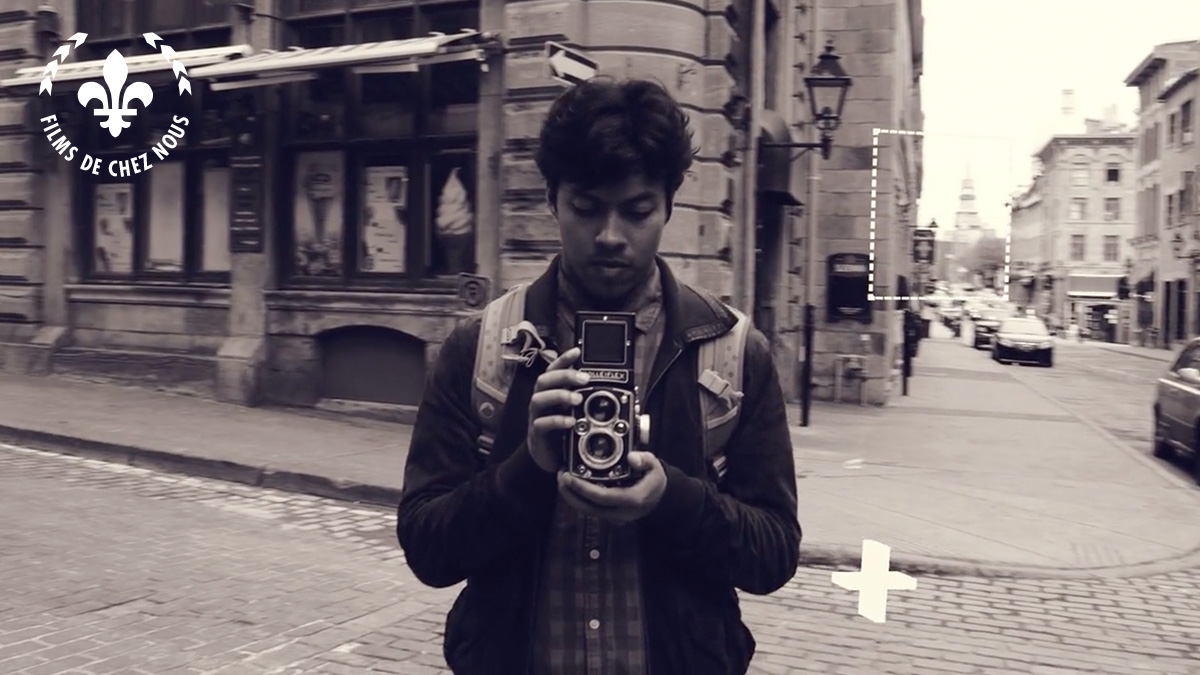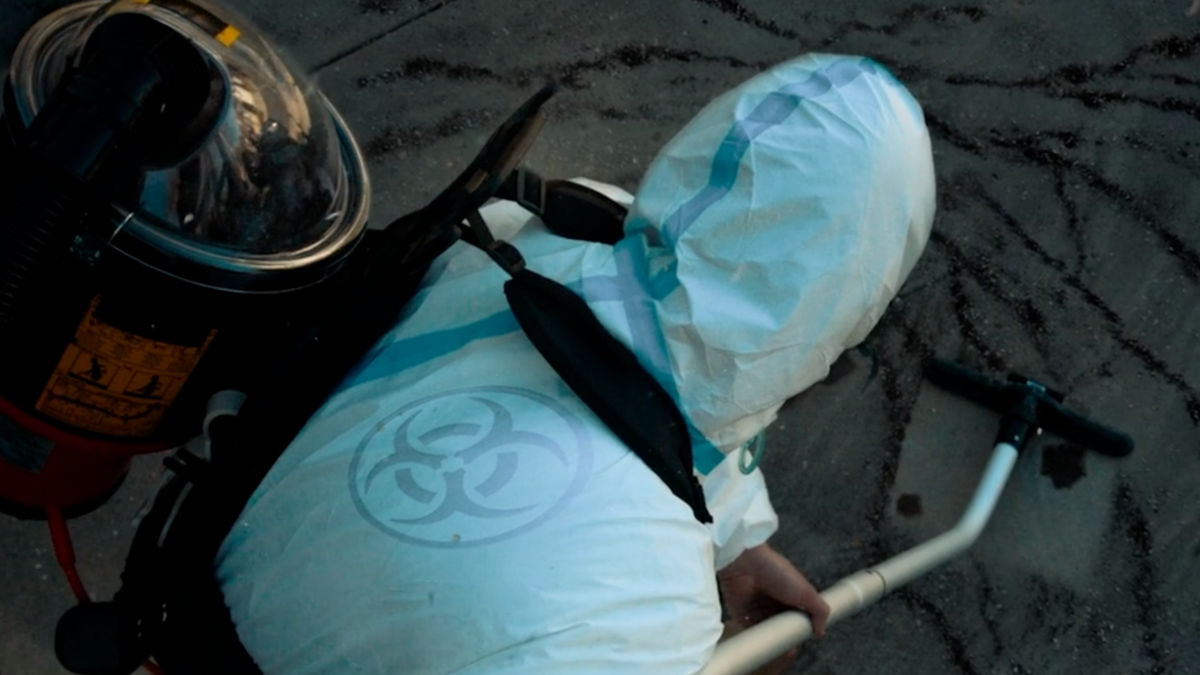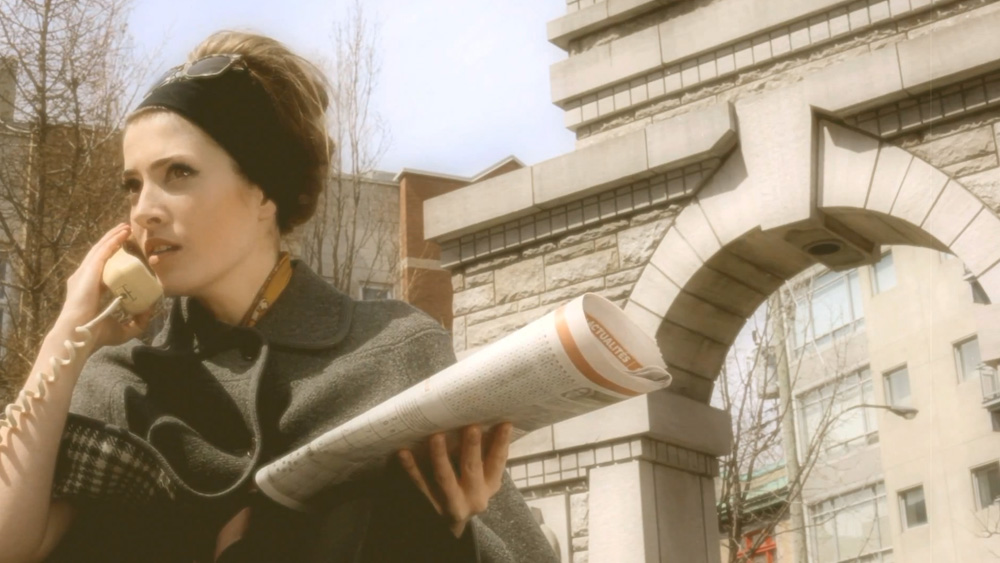A chilling dystopian tale of a world devastated by climate crisis and wealth inequality
The fully CG animated short film “Still Here,” produced by House of Panic and created by Guido Ekker (Shadowboxers), depicts a post-apocalyptic world where the last remnants of nature are highly coveted and worth betraying one’s principles for. The story follows a man navigating a dystopian landscape where the wealthy elite, who control the remaining natural resources, task him with uprooting a rebellion of individuals growing their own plants. The film presents a bleak vision of a future that may not be too distant, where the effects of the climate crisis and income inequality collide. To bring the story to life, Ekker collaborated with Adobe Mixamo Mocap Data and Kitbash to enhance the visuals of the film, drawing on his experience as VFX Supervisor at The Panics (Sundays, A Report of Connected Events). We had the pleasure to ask Guido a few questions on his project, read the full interview below:
What inspired you to create ‘Still Here’ and explore the themes of a post-apocalyptic future, the climate crisis, and the wealth gap?
This film draws inspiration from my personal experiences of watching the news, traveling countries and a big factor in this are the documentaries from David Attenborough. This image also brings to mind the worries of global warming, as nature suffocates and a young generation sees their future slowly being consumed by toxic clouds.
As a filmmaker, I aim to capture this feeling in my film.
I want to explore the widening wealth gap in society. How this gap between rich and poor will continue to widen as the worsening climate crisis affects us all. Placing this in a dystopian setting will emphasize these themes.It is about imminent destruction and trying to survive; where the elite has found a way to live out their days, the poor still seek for a way to survive just on a daily basis.
In this film, and with our hero, we show that this world has passed the point of no return. And without hope, there is only greed.
How did you approach the process of creating the film, from developing the story to using CG animation and collaborating with other artists and teams?
Marc, my co-writer, and I began developing this story during our time at Filmacademy. In fact, we initially envisioned it as a live-action film. However, when I resumed work on the project, COVID-19 had just hit, making it impossible to shoot with a crew and actors. This forced me to reconsider how to make the film, and drawing upon my VFX background, I decided to create it entirely in CG, using Blender as my primary tool.
Animation films normally require a lot of budget and a huge team. Having a very limited team, zero budget and doing most of the CG myself this forced me to come up with clever ways to make the film. Making use of real-time rendering within Blender to cut out render times was a huge help. Realtime rendering also allowed me to light my shots from the start of creation which then allowed me to see where the detail had to be.
Using mocap data and Kitbash3D assets helped form efficiently the visual aspect of the film. It was almost like shooting a live action film with everything being real-time, lights being able to adapt and sets being able to adjust quickly!
Because of this approach, it allowed for more creative freedom, faster shot creation and being able to finish the full cg animation within the limits that we had.
How did you use visual effects to enhance the film’s storytelling and immerse viewers in the dystopian world you created?
Visual effects or CGI serve as the foundation for this film. It is where the world is built, from the bustling cityscapes to the tiniest smog particles, everything is created digitally through visual effects.
There are no limits to what you can depict or convey and as a filmmaker that’s very exciting! Of course you have to deal with your own capabilities within the software, but even that you can learn online.
In fact, I even began learning Blender on-the-go while working on this film. Fortunately, my previous experience with other 3D software came in handy, making it easier to pick up and learn the new tool.
What challenges did you face during the production of ‘Still Here,’ and how did you overcome them?
The most significant challenge of this project was pushing myself to work during downtime, evenings, or weekends on my passion project. Mentally, it was tough to keep going after a long day’s work. However, involving a good friend of mine to handle the sound design and scoring of the film gave me an extra push. It made me realize that I wasn’t solely responsible for the film anymore.
We also faced several technical challenges, as mentioned above. Not having access to a mocap studio for all the animations forced me to use existing mocap data for the entire film. Additionally, optimizing the real-time aspects of the film required quite a bit of tweaking to ensure the scenes would run smoothly at 25fps. Another big challenge was the limited hands we had to create all the 3D assets. Fortunately, we were able to source a lot of existing 3D assets through partnering with Kitbash3D.
What message or takeaway do you hope viewers will get from watching your film, and how do you think it relates to the current state of the world?
I hope that through this film, people will be motivated to make positive changes and adopt sustainable behaviors that benefit the environment. My ultimate goal is to inspire a sense of responsibility and stewardship towards the natural world, cultivating a renewed commitment to preserving it for generations to come.
What advice would you give to aspiring filmmakers who want to create thought-provoking and impactful films like ‘Still Here’?
CG films are becoming easier and faster to produce with each passing year. When I began my career, there were not many online tutorials available. However, times have changed, and now the situation is quite different. My advice would be to take advantage of these new tools, learn from online resources but also explore various cultures, people, history, and nature. This will undoubtedly influence your storytelling and make it more captivating.
Can you tell us what are your favorite short films?
I find it always really hard to pick a favorite, but if it’s about the last year I would definitely vote for Jibaro, directed by Alberto Mielgo.




